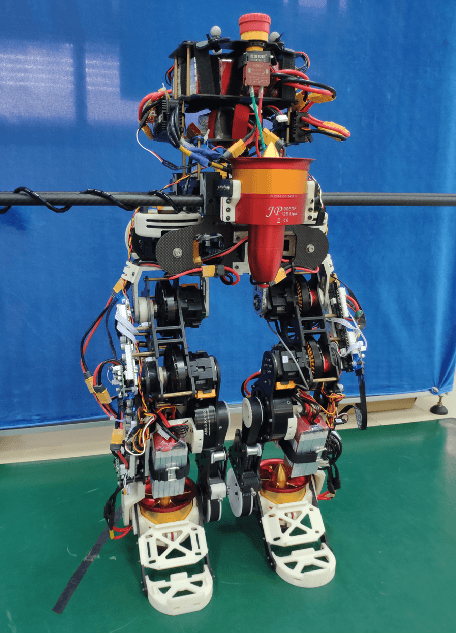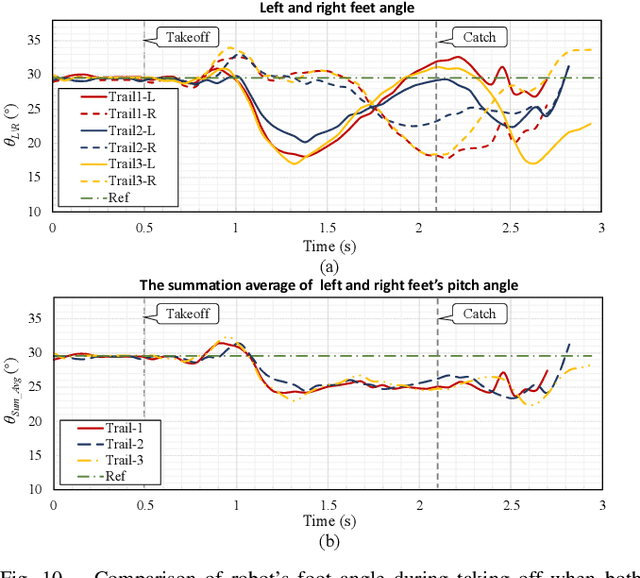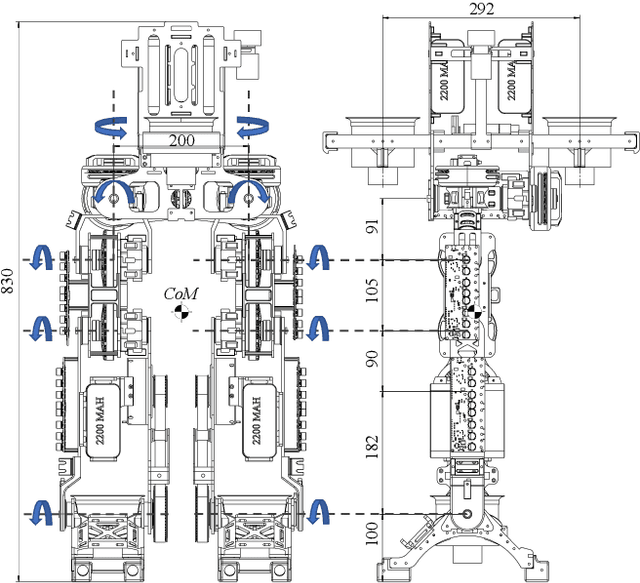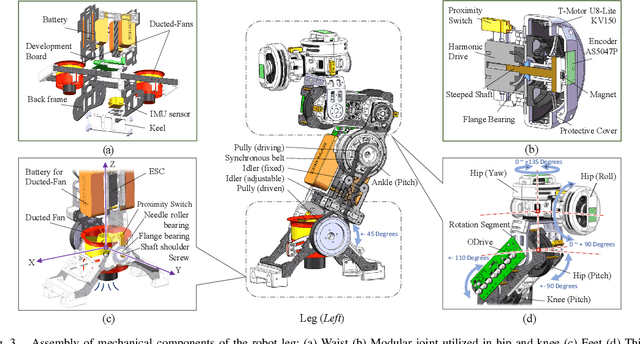Design of a Flying Humanoid Robot Based on Thrust Vector Control
Paper and Code
Aug 26, 2021



Achieving short-distance flight helps improve the efficiency of humanoid robots moving in complex environments (e.g., crossing large obstacles or reaching high places) for rapid emergency missions. This study proposes a design of a flying humanoid robot named Jet-HR2. The robot has 10 joints driven by brushless motors and harmonic drives for locomotion. To overcome the challenge of the stable-attitude takeoff in small thrust-to-weight conditions, the robot was designed based on the concept of thrust vectoring. The propulsion system consists of four ducted fans, that is, two fixed on the waist of the robot and the other two mounted on the feet, for thrust vector control. The thrust vector is controlled by adjusting the attitude of the foot during the flight. A simplified model and control strategies are proposed to solve the problem of attitude instability caused by mass errors and joint position errors during takeoff. The experimental results show that the robot's spin and dive behaviors during takeoff were effectively suppressed by controlling the thrust vector of the ducted fan on the foot. The robot successfully achieved takeoff at a thrust-to-weight ratio of 1.17 (17 kg / 20 kg) and maintained a stable attitude, reaching a takeoff height of over 1000 mm.
 Add to Chrome
Add to Chrome Add to Firefox
Add to Firefox Add to Edge
Add to Edge